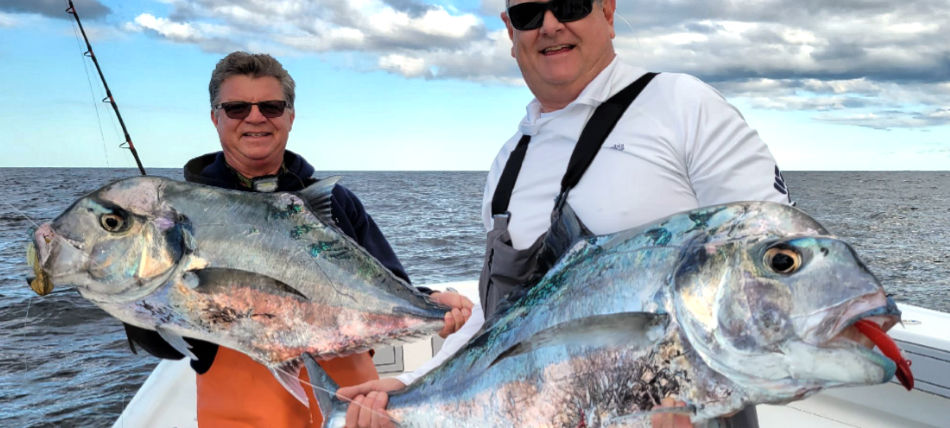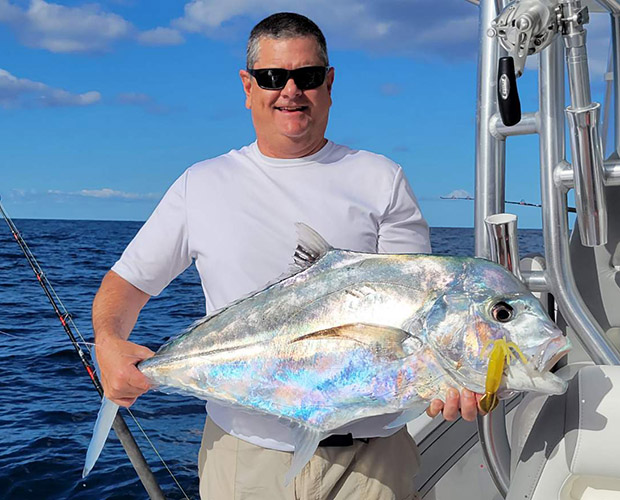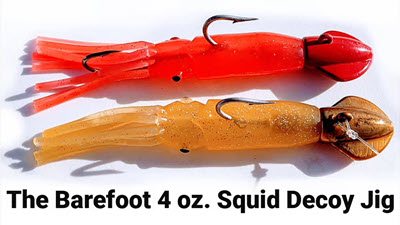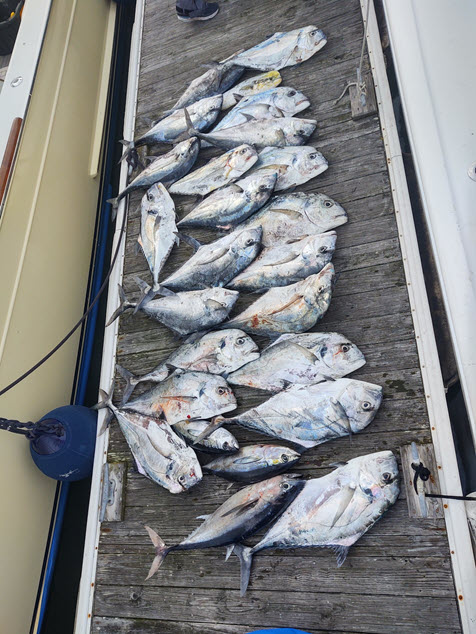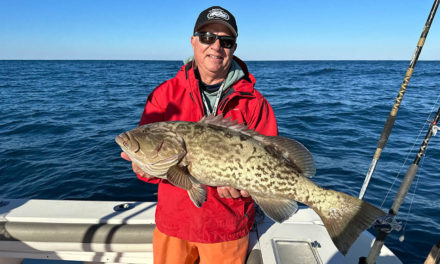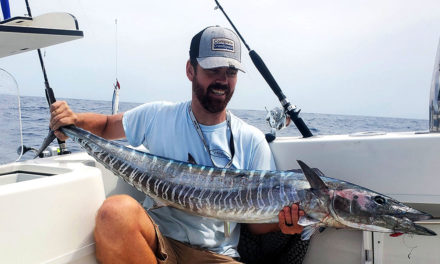Squid is their primary food source. When they see it, they’re not shopping … they’re buying.”
POST HIGHLIGHTS
-
African pompano school up on structures in late winter and early spring on the Atlantic and Gulf coasts
-
the problem with the flutter-style jig is the teaser assist hooks
-
Putting a squid in front of a school of African pompano is a surefire recipe for some fast action
For most anglers, the African pompano is welcome bycatch on bottom-fishing trips for other species. But with the restrictive seasons on standard structure-oriented offshore targets like grouper, snapper, and amberjack, the African pompano has become a primary target. Regarding gameness and quality as table fare, some might argue they belonged near the top of the list the whole time.
“They shut down grouper fishing in January, and I’m not going to stop going offshore, so they’re the next likely candidate,” said Coastal Angler’s own Capt. Tim Barefoot. ‘”They pull hard, they bite, and they taste great. I’d put them in the top five of my favorite fish to eat.”
African pompano school up on nearshore and offshore structures in late winter and early spring on the Atlantic and Gulf coasts. A couple of years ago, Barefoot was introduced to a ridiculously good bite for scads of 15- to 35-pounders out of Wrightsville Beach, N.C., and what he learned might help you dial in the bite where you fish.
The African pompano is a tropical jack species and prefers 65- to 80-degree water temperatures. However, cold water consolidates them to their comfort zone this time of year, and out of Wrightsville Beach, anglers find the magic 65- to 67-degree temps 45 to 60 miles out on 120- to 200-foot-deep structure.
Captain Rick Croson of Living Water Guide Service showed Barefoot this bite for the first time, and on that trip, they caught African pompano until they were tired of reeling them in, as well as a few amberjacks, a dolphin and several blackfin tuna.
With African pompano, the widely accepted best way to catch them is with a flutter-style jig. They are suckers for flashy moving objects. However, if you know Barefoot, you know he is not content with a tool or technique until he has tried to find a better way to do it. He’s an obsessive tinkerer, and that makes him a better angler.
“They are extremely susceptible to flutter jigs, but the problem with those is the teaser assist hooks. We kept hooking them on the outside of the face with those wired stinger hooks,” he said. “With their thin, delicate skin and hard bone underneath, getting a hook set is tough. We were losing a lot of fish.”
The technique Barefoot settled on: his own 4-ounce Squid Decoy Jigs (click the link to purchase one).
“African pompanos are very close to the bottom,” he said. “We drop that squid down to the bottom and pull it up just a few feet. Sometimes you can just set it in the rod holder and wait for it to get slammed. Sometimes you might want to hold it and give some action, but don’t overdo it. Squid is their primary food source. When they see it, they’re not shopping … they’re buying.”
Barefoot uses a 40-pound braid to an 80-pound fluorocarbon leader. He ties on his jig with a loop knot. The thing about squid is fish always hit them from behind to disable the sharp beak in the middle of their tentacles. Barefoot said African pompano, grouper, and many other species almost always take the squid jig deep, and the result is a solid hook set in the mouth.
Putting a squid in front of a school of African pompano is a surefire recipe for some fast action. One last thing: gaff them.
Watch the video for the Maiden Voyage for the 4 oz. Squid Jig.
SALTWATER TACKLE YOU MIGHT WANT TO TRY:
7/0 and 11/0 J-Hook Ching Weights: Target fish include Tuna, Wahoo, Mahi or Common Dolphin, King Mackerel, Wahoo, and more. Easy to rig!
4 oz. Crab Decoy Jig: Target fish for Striped Bass, nearshore Drum, Snook, Grouper, west coast bottom fish, and more.
4 oz. Tuna Squid Decoy Jig: From the eastern, western, Alaskan, and gulf coasts, target fish include: Tuna, Dolphin, Wahoo, Fluke, Flounder, Striped Bass, Seabass, Amberjack (east coast), Yellow Tail (west coast), California White Sea Bass (west coast), Grouper, Snapper, Halibut, Ling cod, and all Alaskan bottom fish.
8 oz. - 12 oz. 10/0 Squid Decoy Jig: Catch BIG Grouper, Amberjack, Giant Stripers, and more.

